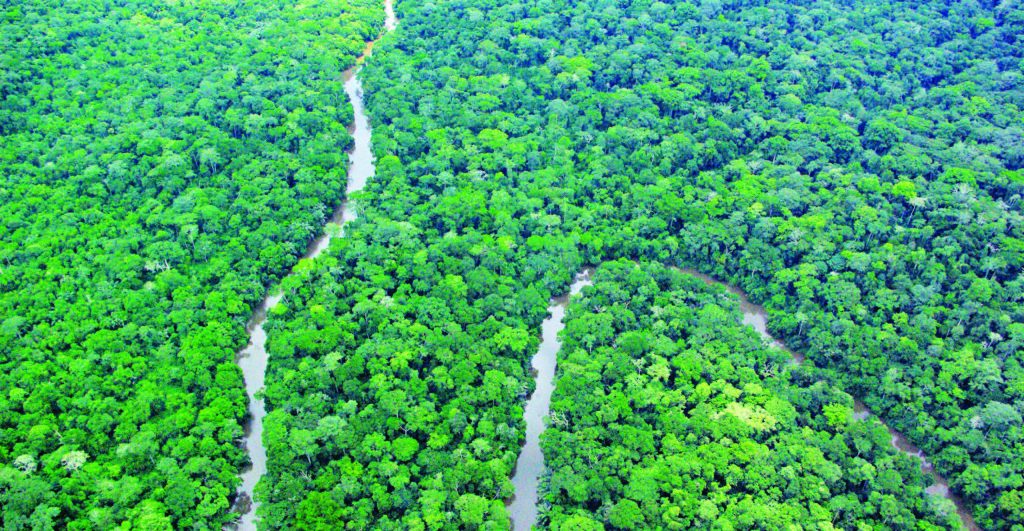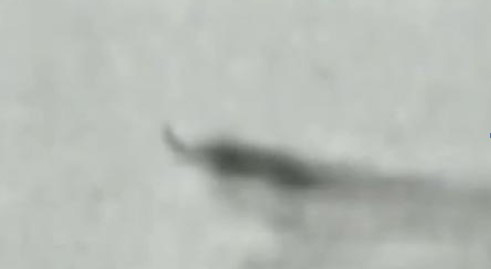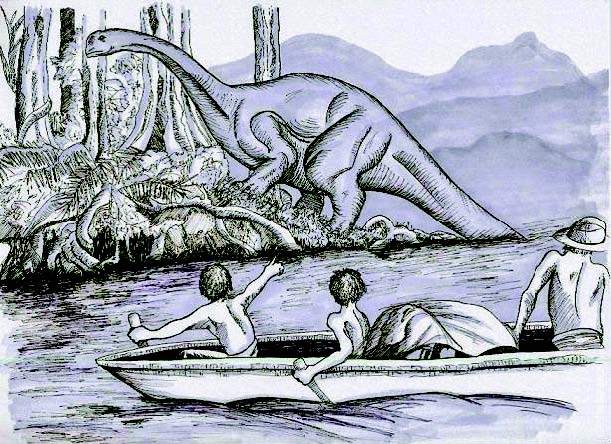Keeping to the Wild Side’s spirit of exploration, let’s take a look at the field of cryptozoology, which attempts to prove the existence of possibly undiscovered animals called cryptids – the most famous being Scotland’s Loch Ness monster, North America’s Bigfoot, and the Yeti of the Himalayas. Though cryptozoology is steeped more closely in myth and anecdotal accounts than science, it’s a pretty exciting field. Plus, former cryptids like gorillas and giant squids did prove real.
This month, we zoom into the steaming swamps of the African Congo in search of one of the most elusive of all cryptids: the Mokéle-mbêmbe (pronounced mokele-embem-beh), purported to be a living dinosaur.

Scientifically speaking, all dinosaurs save for birds died out around 65 million years ago when a 15-kilometer long meteorite crashed into Mexico’s Yucatan peninsula, gouging out a crater 180 kilometers wide and exploding with such force that dust blotted out the sun for months, killing 75% of all life on Earth (interestingly, if the meteorite impacted 30 seconds earlier or later, it would have landed in the sea, possibly sparing much of the planet’s life but robbing humans of their chance to evolve). Robbed of food, dinosaurs likely starved to death over the course of a few years.
So how is it that local tribesfolk in the Congo have reported seeing giant, long-necked animals living deep in the swamps? The first written account of the creatures appeared in a book written in 1776 by Abby Lievain Bonaventure about a French mission to the Congo which encountered enormous footprints in the swamps. When asked, the locals told them about the animals.

In 1913, a German captain named Ludwig Friherr von Stein zu Lausnitz was surveying German colonies in Cameroon when locals told him about the Mokéle-mbêmbe. His account is detailed below.
“The animal is said to be of a brownish-gray color with smooth skin, its size is approximately that of an elephant or at least that of a hippopotamus. It is said to have a long and very flexible neck and only one tooth but a very long one, possibly a horn. A few spoke about a long, muscular tail like that of an alligator. Canoes coming near it are said to be doomed. The animal is said to attack the vessels at once and to kill the crews but without eating the bodies. The creature is said to live in the caves that have been washed out by the river in the clay of its shores at sharp bends. It is said to climb the shores even at daytime in search of food, though its diet is said to be entirely vegetable. The preferred plant was shown to me, a kind of liana with large white blossoms, with milky sap and applelike fruits. At the Ssombo River I was shown a path said to have been made by this animal in order to get its food. The path was fresh and there were plants of the described type nearby. But since there were too many tracks of elephants, hippos, and other large mammals it was impossible to make out a particular spoor with any amount of certainty.”
A living dinosaur?
In the Lingala language of the Congo, Mokéle-mbêmbe means “one who stops the flow of rivers”. It has been described as an amphibious, brownish animal about 30 feet long, with stubby legs, and a long neck and tail. When Bantu tribesfolk were shown picture books of what Mokéle-mbêmbe looked like, they repeatedly chose a sauropod dinosaur known as an Apatosaurus, prompting more explorers to fly down to the Congo and search for the animals. An account by biologist Marcellin Agnagna of his expedition to Lake Tele in 1983 is detailed below.
“At approximately 2:30 PM, we were able to observe a strange animal, with a wide back, a long neck, and a small head. The animal was located at about 1000 feet meters from the edge of the lake, and we were able to advance about 200 feet in the shallow water. The animal had become aware of our presence and was looking around as if to determine the source of the noise. Dinkoumbou, a local villager, continued to shout with fear. The frontal part of the animal was brown, while the back part of the neck appeared black and shone in the sunlight. The animal partly submerged, and remained visible for 20 minutes with only the neck and head above the water. It then submerged completely and no further sightings of the animal took place. It can be said with certainty that the animal we saw was Mokéle-mbêmbe, that it was quite alive, and, furthermore, that it is known to many inhabitants of the Likouala region. Its total length from head to back visible above the waterline was estimated at 15 feet.”Since 1980, over 50 such expeditions have searched for the mysterious monster, but have yielded scant proof of its existence.
“The problem about the Mokéle-mbêmbe legend is that for animals like them to exist, there must be a large breeding population of them – and we wouldn’t have trouble seeing bones, spoor or other evidence of their existence. The scientific process by nature, rules out their existence,” notes palaeontologist Dr. Donald Prothero.
In 1992, a Japanese camera crew was flying above Lake Tele when they claimed to have shot a 15-second video of one of the animals swimming in the lake. When enlarged, the animal looks like this:


Mistaken identity
So is the Mokéle-mbêmbe legend real? Personally I think it is a case of mistaken identity, because the human imagination – spiced up by the fear of the unknown – can turn the mundane into the mythical. Thus, when prompted by generations of tribal storytelling, an elephant or hippopotamus swimming in a river, under certain conditions, might look just like a submerged dinosaur.
Still, more and more explorers are heading out to find the creatures, with a Kickstarter-funded team flying out as recently as 2012. It didn’t find squat.

It helps to know though that the Likouala region of the Congo is vast. It’s at least 66,000 square kilometres, over 100 times the size of Metro Manila. Due to its remoteness and a continued, brutal civil war, only about 20% of it has been explored. It’s extremely likely that the area indeed shelters plants and animals we haven’t discovered yet.

Plus, scientists only discovered the Saola, a beautiful, horned forest antelope in the jungles of Indochina, in 1992. Could there still be modern-day dinosaurs surviving deep in the Congo? 99% of me says probably not, but 1% says I really hope so.
Related stories:
– LOOK: Tiny dinosaur with bat-like wings discovered in China
– Meet the Nodosaur: Earth’s most perfectly-preserved dinosaur
– The ongoing animal mass extinction and how we can stop it





